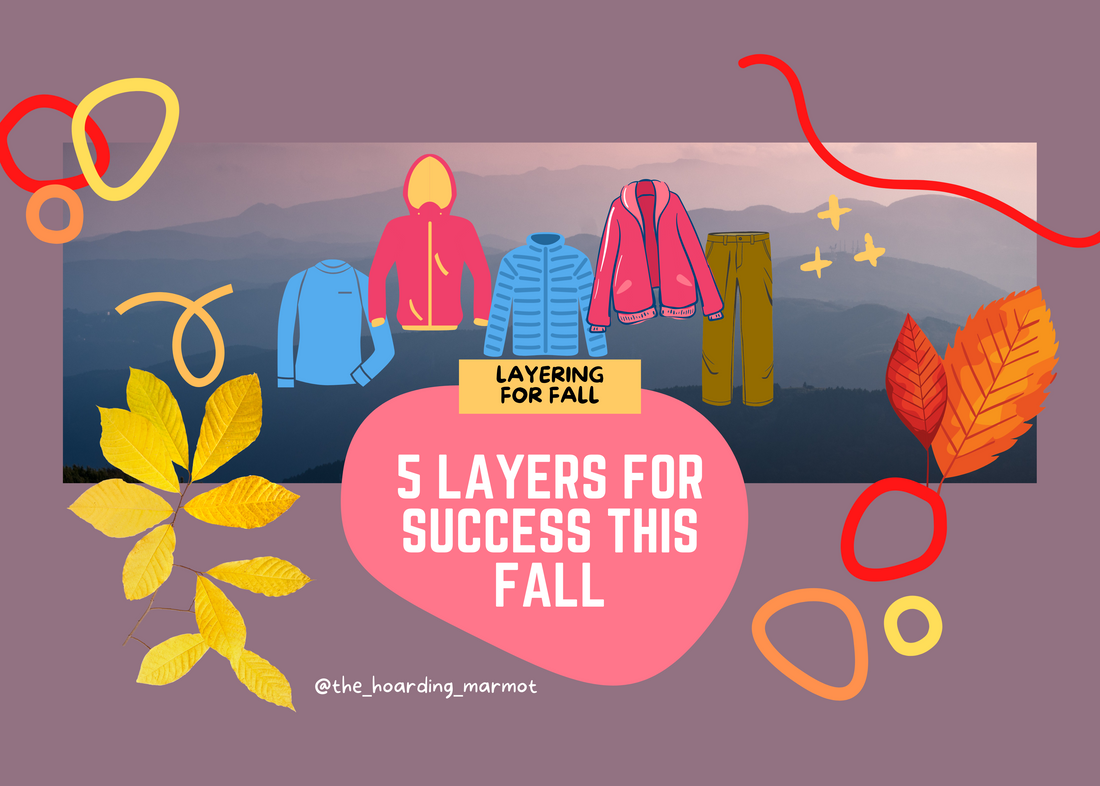
Five Layers for Success This Fall
Share
This fall, don’t change your plans, change your gear. In Alaska, we know better than to wait for sunny days. If you want to get outside this fall, you can! It’s as simple as wearing the right clothes in the right order. Here’s how.

Layer 1: Base Layer
This layer is against your skin and is designed to regulate body temperature and wick moisture away from your skin.
We recommend wool or another wicking fabric for your base layer. If it’s good enough for sheep, it’s good enough for us!
Specific brands to look for: Ibex, Patagonia Capilene, Smartwool, IceBreaker.

Layer 2: Mid Layer
This layer traps heat and also wicks moisture from the base layer. A light jacket or pullover with some thermal features, like a microgrid fabric, are good for this layer.
Hot tip (get it?): Avoid cotton! It takes a long time to dry and doesn’t do much to keep you warm. A polyester blend, wool, synthetics, or fleece are a good alternative.

Layer 3: Insulation Layer
This layer keeps your core warm once you stop moving! This layer is down or synthetic fill material. There’s a debate about which will keep you the most warm, but what you need to know is this: down lasts a long time, even when compressed in your pack. But, once wet, it loses its insulating power. Synthetic keeps you warm even if it gets wet, but over time loses its “loft” (puffiness) and insulating power.

Layer 4: Outer Shell Layer
This layer keeps you dry in wet weather and shields you from wind. This layer should be waterproof, windproof and breathable.
Recommendations depend on the activity. A rubber rain jacket is great for fishing because there is no way you’re getting wet in one of these. For hiking and backpacking when you’re working up a sweat, a softshell nylon or polyester rain jacket will be more breathable. It’s not as waterproof as rubber, but you’ll smell better at the end of the day.
One of our employees made do with a trash bag as a makeshift skirt/rain poncho on an expedition through the Talkeetnas. So, sometimes you come prepared and sometimes you improvise.

Layer 5: Pants Layer(s)
There are multiple options for pants layers depending on activity, weather and personal preferences — for example, do you like being dry?Pants layering can include both a base layer that is moisture wicking and a top layer that is waterproof and windproof. These could be softshell hiking pants that are heavier than a base layer but more breathable than a fully waterproof top pants layer.
Pro tip: Don’t wear jeans! If they get wet, they’re going to weigh considerably more. (Not to mention the chafing.)
Bonus Layer of Advice
Don’t be afraid to mix and match and find the right layers for your activity! The great thing about layers is that it never hurts to bring them along because you can always take them off.
Come down to The Hoarding Marmot and find some layers that will work for you! We promise not to sell you a trash bag.
